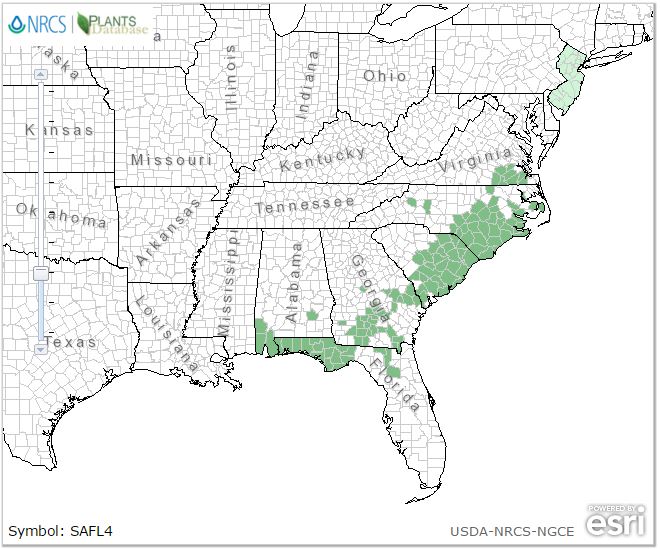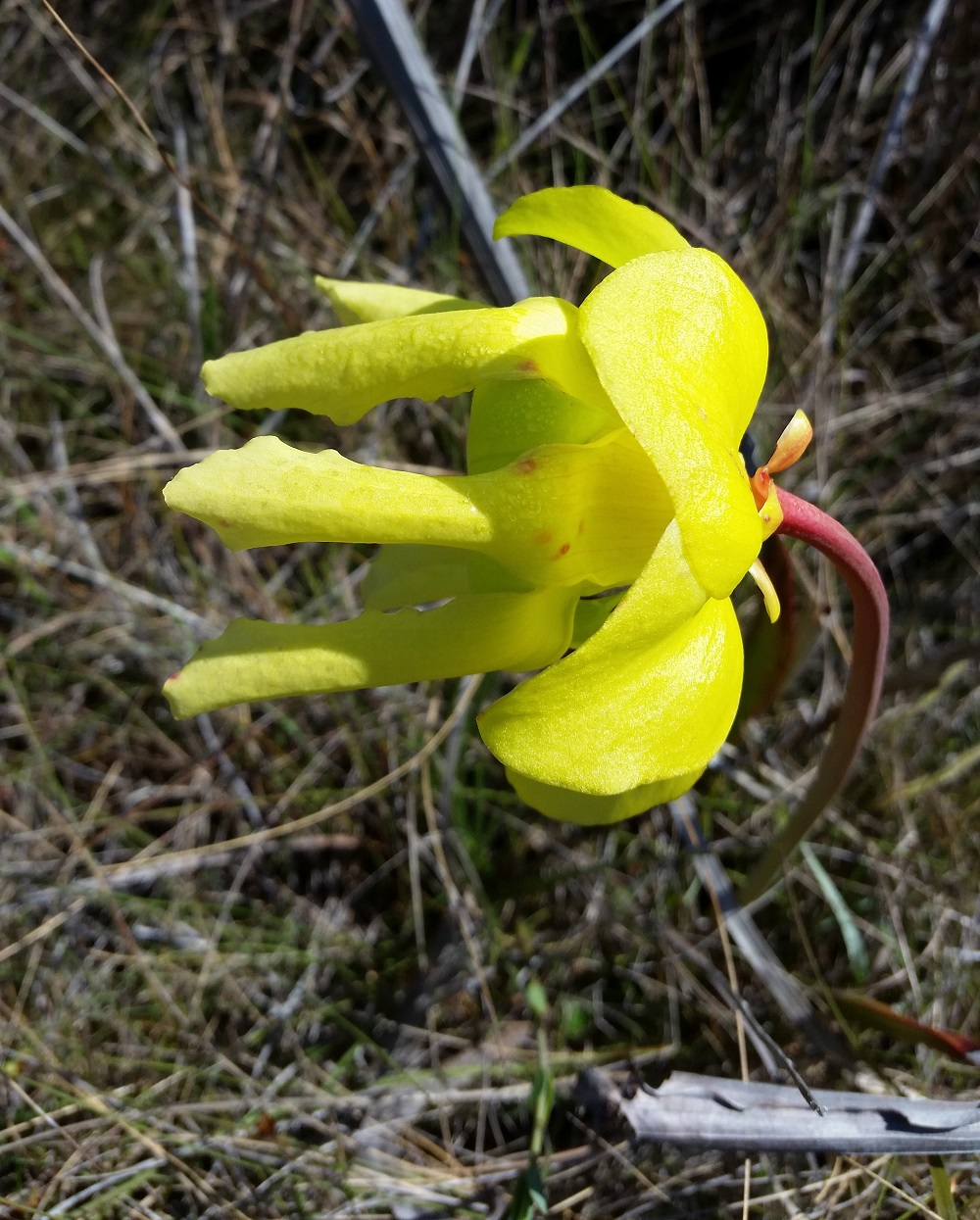Difference between revisions of "Sarracenia flava"
Laurenloria (talk | contribs) |
|||
| Line 30: | Line 30: | ||
==Ecology== | ==Ecology== | ||
<!--===Habitat===--> <!--Natural communities, human disturbed habitats, topography, hydrology, soils, light, fire regime requirements for removal of competition, etc.--> | <!--===Habitat===--> <!--Natural communities, human disturbed habitats, topography, hydrology, soils, light, fire regime requirements for removal of competition, etc.--> | ||
| − | + | ===Phenology=== <!--Timing off flowering, fruiting, seed dispersal, and environmental triggers. Cite PanFlora website if appropriate: http://www.gilnelson.com/PanFlora/ --> | |
| + | It has been observed flowering from February to May, in July, August, and October, with peak inflorescence in March and April.<ref>Nelson, G. [http://www.gilnelson.com/ PanFlora]: Plant data for the eastern United States with emphasis on the Southeastern Coastal Plains, Florida, and the Florida Panhandle. www.gilnelson.com/PanFlora/ Accessed: 13 DEC 2016</ref> | ||
<!--===Seed dispersal===--> | <!--===Seed dispersal===--> | ||
<!--===Seed bank and germination===--> | <!--===Seed bank and germination===--> | ||
Revision as of 15:59, 13 December 2016
| Sarracenia flava | |
|---|---|

| |
| Photo by Katelin Pearson | |
| Scientific classification | |
| Kingdom: | Plantae |
| Division: | Magnoliophyta - Flowering plants |
| Class: | Dicotyledons |
| Order: | Nepenthales |
| Family: | Sarraceniaceae |
| Genus: | Sarracenia |
| Species: | S. flava |
| Binomial name | |
| Sarracenia flava L. | |

| |
| Natural range of Sarracenia flava from USDA NRCS Plants Database. | |
Common names: Yellow pitcherplant, Trumpets
Contents
Taxonomic notes
Synonyms: Sarracenia flava var. flava; S. flava var. atropurpurea (Bull) C.R. Bell; S. flava var. maxima Bull ex Masters; S. flava var. ornata Bull ex Masters; S. flava var. cuprea Schnell; S. flava var. rugelii (Shuttleworth ex de Candolle) Masters; S. flava var. rubricorpora Schnell
Description
Sarracenia flava is a carnivorous plant.
Distribution
Ecology
Phenology
It has been observed flowering from February to May, in July, August, and October, with peak inflorescence in March and April.[1]
